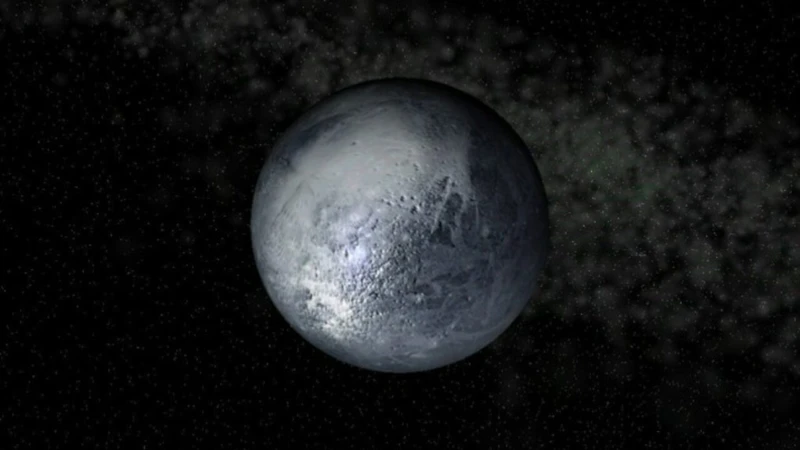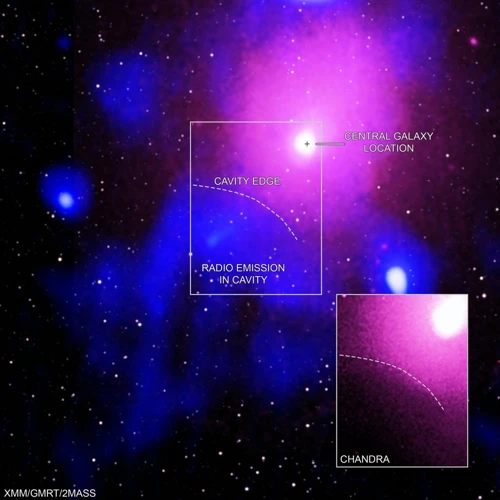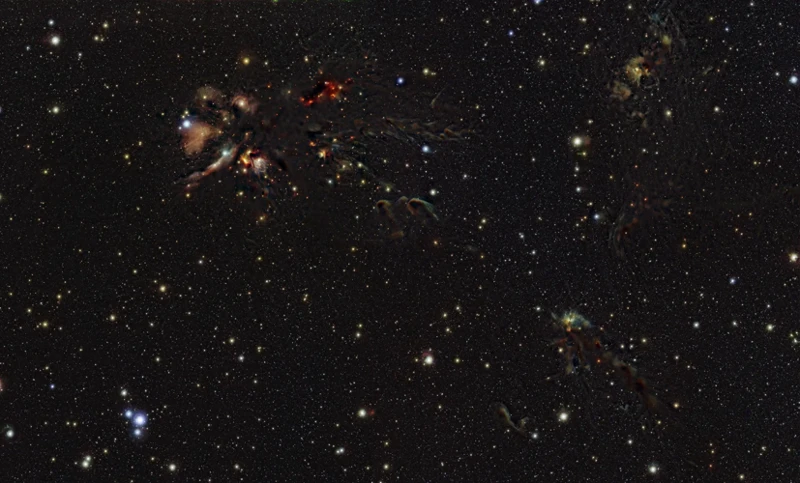Pluto, the enigmatic dwarf planet that was once considered the ninth planet of our solar system, has fascinated scientists and astrologers alike for decades. Its unique characteristics and mysterious nature have sparked countless debates and research endeavors. However, the true significance of Pluto goes far beyond its classification as a planet or dwarf planet. This celestial body holds the key to understanding the transformation and evolution of not only the planetary system but also our understanding of the cosmos and its impact on our lives. In this article, we delve into the intriguing realm of Pluto’s power and explore the various aspects of its role in transformation, surprising discoveries, and the mysteries yet to be unveiled.
Contents
- The Significance of Pluto
- Transformation and Evolution
- Surprising Discoveries
- Mysteries Unveiled
- Conclusion
-
Frequently Asked Questions
- 1. How was Pluto discovered?
- 2. Why is Pluto classified as a dwarf planet?
- 3. What is the significance of Pluto’s orbit?
- 4. Are there seasons on Pluto?
- 5. How has Pluto’s classification affected our understanding of the solar system?
- 6. What is the role of Pluto in astrology?
- 7. How do Pluto’s moons contribute to scientific understanding?
- 8. What is the significance of Pluto’s icy surface?
- 9. Could there be life on Pluto?
- 10. What are the ongoing or future missions to study Pluto?
- References
-
Frequently Asked Questions
- 1. How did Pluto’s demotion from planet to dwarf planet affect our understanding of the solar system?
- 2. What role does Pluto play in the ongoing evolution of our solar system?
- 3. How does Pluto’s astrological significance impact our understanding of transformation?
- 4. What impact does Pluto have on the moons in its orbit?
- 5. What are some surprising discoveries related to Pluto’s role in the Kuiper Belt?
- 6. Is there a relationship between Pluto and the constellation Ophiuchus?
- 7. Can we unravel the origins and composition of Pluto?
- 8. How has the New Horizons mission contributed to our understanding of Pluto?
- 9. Are there any other celestial bodies similar to Pluto in our solar system?
- 10. What is the future of Pluto research and exploration?
- References
- Read More
The Significance of Pluto

The Significance of Pluto lies in its unique characteristics and its impact on our understanding of the cosmos. Firstly, Pluto’s discovery in 1930 by astronomer Clyde Tombaugh revolutionized our understanding of the outer edges of our solar system. It was the first object to be discovered in what is now known as the Kuiper Belt, a region filled with icy bodies beyond the orbit of Neptune. This discovery led to a reevaluation of the traditional model of our solar system and paved the way for the classification of other dwarf planets.
Secondly, Pluto’s size and composition offer valuable insights into the formation and evolution of celestial bodies. Despite its small size, it has a complex and varied geology, including a thin nitrogen atmosphere that undergoes seasonal changes. This suggests that geological activity and transformation can occur on small, icy bodies, challenging previous assumptions. Additionally, the presence of ice on Pluto raises questions about the abundance of water in the outer edges of our solar system and its role in planetary evolution.
Pluto’s unique orbit and interactions with other celestial bodies have a significant influence on the dynamics of the Kuiper Belt and the evolution of its moons. Its largest moon, Charon, exhibits a tidally locked rotation with Pluto, indicating a complex interplay between gravitational forces. This interaction has likely shaped the moons’ surface features and orbits over billions of years, highlighting the transformative power of celestial bodies in shaping their surroundings.
In astrology, Pluto plays an essential role in personal transformation and empowerment. It is associated with themes of death and rebirth, destruction and regeneration, and the uncovering of hidden truths. According to astrologers, its placement in a birth chart can offer insights into one’s personal transformational journey and areas of deep psychological transformation.
It is evident that Pluto’s significance reaches far beyond its classification as a planet or dwarf planet. Its exploration has challenged traditional notions, provided insights into planetary evolution, and influenced our understanding of astrology. The mysteries surrounding Pluto continue to captivate scientists and enthusiasts, fueling further exploration and unraveling the complexity of our cosmic neighborhood.
(Internal HTML link: Ophiuchus Constellation Story)
Transformation and Evolution

Transformation and Evolution are fundamental aspects of Pluto’s nature and its impact on both planetary evolution and astrological transformation. Firstly, Pluto’s Role in Planetary Evolution is significant as it challenges our understanding of how celestial bodies evolve and transform over time. Its unique characteristics, such as its icy composition and complex geology, reveal the potential for geological activity on small bodies. This challenges the previously held belief that only larger planets can undergo significant transformations. Additionally, Pluto’s interactions with other celestial bodies in the Kuiper Belt and its moons, such as Charon, play a crucial role in shaping their evolution through gravitational forces and tidal interactions.
In the realm of Astrological Transformation, Pluto’s influence is undeniable. As the ruler of the sign Scorpio, it governs profound transformations, both personal and collective. Its association with death and rebirth, destruction and regeneration, reflects the transformative nature of Pluto’s energy. In astrological charts, its placement signifies areas of deep psychological transformation and the uncovering of hidden truths. Its influence extends beyond the individual level, impacting societal and global transformations.
By understanding the transformative power of Pluto, we can gain insights into the evolution of celestial bodies and their impact on our lives. Whether it is the way Pluto challenges traditional models of planetary evolution or its role in astrological transformation, Pluto’s significance cannot be overlooked.
(Internal HTML link: Black Holes: The Cosmic Web)
1. Pluto’s Role in Planetary Evolution
Pluto’s Role in Planetary Evolution is a fascinating aspect of its significance. While Pluto is no longer classified as a planet, it still holds valuable insights into the processes that shape planetary bodies. One notable aspect is its location in the Kuiper Belt, a region filled with remnants from the early solar system. The study of Pluto and other objects in this region can provide clues about the formation and evolution of planets.
Pluto’s icy composition sheds light on the presence of volatile materials in the outer reaches of the solar system. Its surface is composed primarily of nitrogen, methane, and carbon monoxide ice, suggesting that these volatile substances played a crucial role in the early stages of planetary formation. The abundance of these icy materials raises questions about the availability of water and organic compounds in the outer regions, which are essential ingredients for the development of life.
Pluto’s interaction with its moon, Charon, also plays a significant role in understanding planetary evolution. The gravitational forces between these two bodies have likely led to tidal heating, which may have fueled geological activity on both Pluto and Charon. This indicates that even small celestial bodies can undergo dynamic processes and evolve over time.
Studying Pluto’s geology and surface features can help us understand the forces that shape planets and their moons. Impact craters, ice mountains, and the presence of a thin atmosphere provide evidence of geological processes that have affected Pluto’s surface. These processes, such as tectonic activity and cryovolcanism, contribute to the transformation and evolution of celestial bodies.
Pluto’s evolution can also provide insights into larger-scale planetary dynamics. By studying the geological features and the history of transformation on Pluto, scientists can gain a better understanding of how planets, including Earth, have evolved over billions of years. This knowledge can help in predicting future changes and understanding the potential for habitability.
Pluto’s role in planetary evolution highlights the interconnectedness of celestial bodies and the intricate processes that shape our solar system. By exploring and analyzing the characteristics and history of Pluto, scientists can improve our understanding of our own planet’s past and future. The study of Pluto’s significance in planetary evolution paves the way for further exploration and advances in our knowledge of the universe.
(Internal HTML link: Predicting Climate Change through Planetary Alignments)
2. Pluto’s Impact on Astrological Transformation
Pluto’s Impact on Astrological Transformation is a captivating aspect of its significance. In astrology, Pluto is often regarded as a powerful and transformative force, representing deep psychological changes, personal growth, and rebirth. Its influence is thought to manifest in individuals’ lives through intense experiences and profound transformations.
Pluto’s presence in an individual’s birth chart is believed to reveal areas of life where transformative change is most likely to occur. Its placement and aspects to other planets can offer insights into the challenges and opportunities for growth that one may encounter throughout their lifetime. People with prominent Pluto placements often possess a strong desire for personal transformation and a deep fascination with the hidden aspects of life.
Astrologers associate Pluto with themes such as power, control, and the unveiling of hidden truths. It is often linked to intense emotional experiences, the release of repressed emotions, and the need for cathartic healing. Pluto’s influence can signify a time of inner reflection, self-discovery, and the shedding of old patterns and beliefs to make way for personal evolution.
Transits of Pluto, where it aligns with other planets in the sky, are believed to bring about profound shifts and changes in a person’s life. These transits have been associated with major life events or turning points, such as career changes, relationship transformations, or spiritual awakenings. Pluto’s influence is potent and may involve the dismantling of old structures, the breaking down of barriers, and the potential for profound spiritual growth.
However, it’s important to note that Pluto’s impact is not always easy or pleasant. Its transformative power can be disruptive and intense, often challenging individuals to confront their deepest fears and make difficult choices. The process of personal transformation associated with Pluto can be arduous but ultimately rewarding, leading to a sense of empowerment and a more authentic expression of one’s true self.
Pluto’s impact on astrological transformation is profound. It represents the energies of change, growth, and rebirth within the realm of astrology. Its influence can be both challenging and transformative, guiding individuals on a journey of self-discovery, healing, and personal evolution. Understanding Pluto’s role within astrology enables individuals to navigate through life’s complexities and maximize their potential for inner development and spiritual growth.
Surprising Discoveries

Surprising Discoveries in relation to Pluto have provided astronomers with fascinating insights into the nature of our solar system and beyond. Firstly, the study of Pluto’s moons has revealed unexpected dynamics and evolutionary processes. For instance, the discovery of the four small moons—Nix, Hydra, Kerberos, and Styx—has raised questions about their origin and the complex interactions within the Pluto system. Scientists speculate that these moons might be remnants of a collision between Pluto and another celestial body, which resulted in the formation of the Pluto-Charon binary system. Each moon exhibits unique characteristics, and their irregular shapes and surface features indicate a history of geological activity and transformation.
Pluto’s exploration has shed light on its dynamic interactions within the Kuiper Belt. The New Horizons mission captured images of other Kuiper Belt objects, revealing a diverse population of icy bodies with intriguing geological formations. These findings expand our understanding of the Kuiper Belt as a dynamic region with its own evolutionary processes, distinct from the inner regions of the solar system. Such discoveries highlight Pluto’s role as a key player in shaping the dynamics and evolution of the Kuiper Belt.
The surprising discoveries regarding Pluto and its moons, as well as its interactions within the Kuiper Belt, have challenged previous assumptions and offered valuable insights into the complexity and diversity of the outer edges of our solar system.
1. Pluto’s Influence on Moons and Their Evolution
Pluto’s Influence on Moons and Their Evolution is a fascinating area of study that sheds light on the dynamic relationship between Pluto and its moons. Here are some key points to understand this influence:
1. Gravitational Interactions: Pluto’s gravitational pull has a significant impact on the orbits and evolution of its moons. The most prominent moon, Charon, is in a tidally locked rotation with Pluto, meaning that it always shows the same face to the planet. This synchronization is a result of gravitational forces and has likely occurred over billions of years. Other smaller moons, such as Nix, Hydra, Styx, and Kerberos, also experience these gravitational interactions, which shape their orbits and influence their evolution.
2. Reshaping of Moon Surfaces: The gravitational interactions between Pluto and its moons can cause tidal deformations and heating of their interiors. This process can lead to geological activity and reshaping of the moon surfaces. For example, observations from the New Horizons mission revealed intriguing features on Charon’s surface, including a vast chasm named Serenity Chasma and a collection of ridges and valleys. These findings suggest that Pluto’s influence has played a crucial role in sculpting the landscape of its moons.
3. Formation and Evolution: The presence of multiple moons around Pluto poses questions about their formation and evolution. It is believed that Pluto’s moons were formed through a collision between Pluto and another large object in the early solar system. The debris from this impact eventually coalesced to form the moons we see today. Over time, the gravitational interactions between the moons and Pluto have influenced their orbits, leading to a complex dance of celestial bodies.
4. Capture and Loss of Moons: While the gravitational influence of Pluto can capture moons, it can also lead to their loss. The dynamics of the Pluto-moon system can be affected by the gravitational interactions with other objects in the Kuiper Belt. This interaction can destabilize the orbits of smaller moons, causing them to either collide with Pluto or escape into interplanetary space.
Studying Pluto’s influence on its moons provides valuable insights into the intricate interplay between celestial bodies in our solar system. The gravitational interactions shape the orbits, surfaces, and evolution of these moons, highlighting the transformative power that Pluto wields over its immediate environment.
2. Pluto’s Dynamic Interactions in the Kuiper Belt
Pluto’s Dynamic Interactions in the Kuiper Belt are a key aspect of its significance. As a member of the Kuiper Belt, a region beyond Neptune filled with icy bodies, Pluto engages in dynamic interactions with other celestial objects, shaping the evolution of the region.
1. Interaction with Neighboring Objects: Pluto’s gravitational pull influences the orbits and trajectories of nearby objects in the Kuiper Belt. This gravitational dance can lead to close encounters and occasional collisions between smaller bodies, resulting in dynamic changes within the region.
2. Resonance with Neptune: Pluto’s orbit shares a unique resonance with Neptune, known as a 3:2 mean-motion resonance. For every two orbits around the Sun that Neptune completes, Pluto completes three. This resonance ensures that the two bodies are never in the same location at the same time, which prevents their gravitational interactions from destabilizing their respective orbits.
3. Tug of War with Charon: Pluto’s largest moon, Charon, also plays a significant role in the dynamic interactions within the Kuiper Belt. The gravitational interaction between Pluto and Charon creates a tug-of-war effect, with each body exerting a gravitational influence on the other and shaping their respective orbits. This interaction has likely played a role in the formation and evolution of other moons in the region.
4. Perturbations and Stability: Pluto’s interactions with neighboring objects and resonances with Neptune can cause perturbations in its orbit. These perturbations sometimes lead to temporary instabilities and chaotic behavior within its trajectory. However, over millions of years, the dynamical interactions between Pluto and other objects in the Kuiper Belt have resulted in relatively stable orbits for both Pluto and its moons.
Understanding the dynamic interactions within the Kuiper Belt and the role of Pluto within this complex system is crucial for unraveling the evolutionary history of the region. By studying its interactions, scientists gain insights into the formation, evolution, and stability of objects in this distant part of our solar system. Pluto’s dynamic interactions within the Kuiper Belt highlight the intricate dance that celestial bodies engage in, shaping the architecture and evolution of our cosmic neighborhood.
Mysteries Unveiled

Mysteries Unveiled within the realm of Pluto’s enigmatic nature offer a glimpse into the unknown aspects of this celestial body. One intriguing topic revolves around the relationship between Pluto and Ophiuchus, a lesser-known constellation situated near the zodiac. Although not part of the traditional zodiac, Ophiuchus possesses its own fascinating mythology and astrological significance. Exploring the potential connection between Pluto and Ophiuchus could shed light on the hidden influences and cosmic forces that impact our lives. Additionally, the origins and composition of Pluto remain largely mysterious. Scientists have been studying this dwarf planet to unravel its geological history, gain insights into its internal structure, and determine the key elements that make up its composition. Understanding the origins and composition of Pluto will not only provide valuable knowledge about our solar system’s formation but also offer insights into the diverse and complex nature of celestial bodies beyond our planet. The unveiling of these mysteries will contribute to our understanding of the universe and the rich tapestry of celestial phenomena surrounding us.
1. The Relationship Between Pluto and Ophiuchus
The Relationship Between Pluto and Ophiuchus is a fascinating topic that explores the connection between the distant dwarf planet and the Ophiuchus constellation. While Pluto has gained recognition for its astrological significance, Ophiuchus is an often-overlooked constellation that lies on the celestial equator. Here are some intriguing aspects of their relationship:
1. Astronomical Considerations:
– Position: Ophiuchus is situated near the celestial equator, between Scorpius and Sagittarius constellations, while Pluto resides in the outer edges of our solar system.
– Zodiac Connection: Ophiuchus is sometimes referred to as the 13th zodiac sign, although it is not officially recognized in Western astrology. This leads to speculation about its possible influence on astrological interpretations, including the impact of Pluto’s placement in relation to Ophiuchus.
2. Astrological Interpretations:
– Transformational Energy: Ophiuchus is associated with healing, knowledge, and spiritual wisdom. When Pluto aligns with this constellation in a birth chart, it is believed to amplify its transformative energy. This alignment may indicate a profound journey of personal growth and spiritual evolution.
– Unveiling Hidden Truths: Both Pluto and Ophiuchus represent the uncovering of hidden aspects. Pluto delves into deep psychological transformation, while Ophiuchus embodies the pursuit of hidden knowledge and esoteric mysteries.
3. Esoteric Symbolism:
– Serpent Bearer: Ophiuchus is symbolized by a man holding a serpent, representing the mythological figure of Asclepius, the ancient Greek god of healing. This symbolizes the power of transformation and rebirth.
– Pluto’s Connection: The association of Pluto, known for its transformative energy, with Ophiuchus enhances the symbolism of regeneration and healing. It suggests that profound spiritual growth and personal transformation can be achieved through the exploration of hidden realms.
While the relationship between Pluto and Ophiuchus may not be recognized in traditional astrological systems, its exploration opens up a realm of possibilities for those seeking to understand the interconnectedness of cosmic forces. Whether it be through the alignment of celestial bodies or the symbolism they represent, the relationship between Pluto and Ophiuchus invites us to delve deeper into the mysteries of astrology and the profound transformative potential that lies within.
2. Unraveling Pluto’s Origins and Composition
Unraveling Pluto’s Origins and Composition has been a focal point of scientific investigation ever since its discovery. Scientists have gathered a wealth of data from space missions like NASA’s New Horizons, which conducted a flyby of Pluto in 2015. Through these missions, researchers have been able to study the dwarf planet’s surface features, atmosphere, and composition, shedding light on its mysterious origins.
One of the fascinating aspects of Pluto’s composition is the presence of various ices, including nitrogen, methane, and carbon monoxide. These ices indicate the prevalence of volatiles, substances that easily change from solid to gas at low temperatures. The abundance of ices suggests that Pluto originated in the outer regions of the solar system, where temperatures are low enough for volatile compounds to condense and form icy bodies.
The discovery of a vast, heart-shaped plain on Pluto’s surface known as Sputnik Planitia has sparked curiosity among scientists. This region is composed mainly of nitrogen ice, raising questions about its formation and stability. Some theories propose that Sputnik Planitia formed due to an impact by a large object, causing volatile substances to rise to the surface. Others suggest that it could be the result of convection currents within Pluto’s icy mantle.
The composition of Pluto’s atmosphere is another intriguing aspect. It consists primarily of nitrogen, with traces of methane and carbon monoxide. However, the atmosphere is not statically stable and undergoes seasonal changes. As Pluto moves along its elliptical orbit, the planet’s distance from the sun varies, causing the temperature to fluctuate. This variation in temperature leads to the expansion and contraction of its atmosphere, resulting in seasonal changes in atmospheric pressure and composition.
Studying Pluto’s origins and composition provides valuable insights into the formation and evolution of the outer regions of our solar system. By analyzing the composition of the dwarf planet and its moons, scientists can piece together the puzzle of how planets and small celestial bodies form and evolve over time.
The data gathered from the New Horizons mission continues to be studied and analyzed, unraveling the mysteries of Pluto’s origins and composition. As our knowledge and understanding of Pluto deepen, so too does our understanding of the intricate processes that shape celestial bodies in our ever-expanding universe.
Conclusion

In conclusion, the significance of Pluto cannot be underestimated. From its role in the transformation and evolution of our planetary system to its impact on astrology, Pluto has continued to intrigue and challenge our understanding of the cosmos. Its discovery and classification as a dwarf planet opened up new possibilities for exploring the outer edges of our solar system and understanding the formation of celestial bodies. Pluto’s unique characteristics, such as its complex geology and interaction with its moons, have provided invaluable insights into the processes of transformation and evolution in the universe.
Moreover, Pluto’s influence extends beyond the realm of science. In astrology, it is associated with profound personal transformation and the uncovering of hidden truths. Its placement in a birth chart can offer profound insights into the individual’s journey of growth and self-discovery.
Despite its small size and distance from Earth, Pluto continues to reveal surprising discoveries and unravel mysteries. The ongoing exploration and study of this enigmatic dwarf planet will undoubtedly contribute to our ever-expanding knowledge of the cosmos and our place within it.
In conclusion, Pluto’s power lies not only in its physical characteristics and scientific importance but also in the way it taps into the realms of transformation, evolution, and personal growth. As we continue to delve into the mysteries of this distant world, we deepen our understanding of the interconnectedness and vastness of the universe we inhabit.
img src=”pluto-image.jpg” alt=”Pluto”
Frequently Asked Questions

1. How was Pluto discovered?
Pluto was discovered in 1930 by American astronomer Clyde Tombaugh while conducting a systematic search for a planet beyond Neptune.
2. Why is Pluto classified as a dwarf planet?
Pluto is classified as a dwarf planet because it does not meet the criteria set by the International Astronomical Union (IAU) for a full-fledged planet. It shares its orbital neighborhood, the Kuiper Belt, with many other similar-sized objects.
3. What is the significance of Pluto’s orbit?
Pluto’s eccentric and inclined orbit challenges our understanding of planetary formation and migration. Its orbit intersects with that of Neptune, causing dynamic interactions between the two and highlighting the complexity of celestial dynamics.
4. Are there seasons on Pluto?
Yes, there are seasons on Pluto. Despite being far from the Sun, its axial tilt and elliptical orbit cause significant variations in sunlight and temperature, leading to the formation and disappearance of seasonal frost.
5. How has Pluto’s classification affected our understanding of the solar system?
Pluto’s reclassification as a dwarf planet prompted a reevaluation of the definition of a planet and led to a better understanding of the diverse range of celestial bodies in our solar system. It also highlighted the need for clearer criteria to classify objects in space.
6. What is the role of Pluto in astrology?
In astrology, Pluto is associated with transformation, power, and the uncovering of deep subconscious patterns. Its placement in a birth chart can signify areas of intense personal growth and areas of life where profound changes occur.
7. How do Pluto’s moons contribute to scientific understanding?
Pluto’s moons, such as Charon, Nix, and Hydra, provide valuable insights into the dynamics and evolution of the Pluto system. Their masses and orbits reveal the complex gravitational interactions at play and offer clues about the history and formation of the moons themselves.
8. What is the significance of Pluto’s icy surface?
Pluto’s icy surface holds clues about the abundance and distribution of water in the outer reaches of our solar system. It also suggests that geological activity occurs on small, icy bodies, challenging previous assumptions about the need for large planets to have active geology.
9. Could there be life on Pluto?
Considering Pluto’s extreme cold and lack of a substantial atmosphere, the possibility of life as we know it on Pluto is highly unlikely. However, future missions and further exploration of its moons and subsurface could potentially uncover unexpected forms of life or conditions conducive to microbial life.
10. What are the ongoing or future missions to study Pluto?
The New Horizons mission, launched in 2006, provided the first detailed images and data of Pluto in 2015. Currently, there are no specific missions planned, but scientists and researchers continue to analyze the wealth of data gathered by New Horizons, which continues its journey into the Kuiper Belt.
References
- The Astrological Pluto & The Soul’s Journey from Life to …
- Planet Pluto in Astrology: Transformation and Regeneration
- Pluto in your Birth Chart – A Guide to Evolution and Power
Frequently Asked Questions

1. How did Pluto’s demotion from planet to dwarf planet affect our understanding of the solar system?
The demotion of Pluto from planet to dwarf planet in 2006 prompted a reevaluation of our understanding of the solar system. It highlighted the need for clearer definitions and criteria for classifying celestial bodies, leading to a more accurate representation of the diversity present in our cosmic neighborhood.
2. What role does Pluto play in the ongoing evolution of our solar system?
Pluto’s role in the ongoing evolution of our solar system is still being studied. However, scientists believe that it may have played a significant role in distributing material and influencing the dynamics of the Kuiper Belt, which contains countless icy bodies.
3. How does Pluto’s astrological significance impact our understanding of transformation?
Astrologically, Pluto is associated with transformation and evolution. Its position in a birth chart can indicate profound personal growth, inner transformation, and the need to release old patterns. Understanding Pluto’s astrological significance can provide insights into the process of transformation in our lives.
4. What impact does Pluto have on the moons in its orbit?
Pluto’s influence on its moons is immense. Its gravitational pull shapes and affects the orbital dynamics of these moons, leading to a complex dance between Pluto and its satellites. The moons themselves have evolved under the influence of Pluto, undergoing various changes over time.
Surprising discoveries related to Pluto’s role in the Kuiper Belt include its dynamic interactions with other objects in the region. These interactions can lead to collisions, gravitational interactions, and even the exchange of material between celestial bodies, further shaping the evolution of the Kuiper Belt.
6. Is there a relationship between Pluto and the constellation Ophiuchus?
There is no direct relationship between Pluto and the constellation Ophiuchus. While Ophiuchus lies along the same ecliptic plane as Pluto, they are not connected in terms of their celestial proximity or gravitational influence.
7. Can we unravel the origins and composition of Pluto?
Scientists have made significant progress in unraveling the origins and composition of Pluto. By studying its surface features, geology, and chemical composition, they have gained insights into its formation as a result of the early solar system’s processes. However, some mysteries surrounding Pluto’s exact composition and geological history remain.
8. How has the New Horizons mission contributed to our understanding of Pluto?
The New Horizons mission, launched in 2006, provided the first detailed images and scientific data of Pluto. It revealed a diverse and geologically active world, challenging previous assumptions and shedding light on the complex nature of dwarf planets. The mission significantly contributed to our understanding of Pluto’s surface, atmosphere, and moons.
9. Are there any other celestial bodies similar to Pluto in our solar system?
Yes, there are other celestial bodies similar to Pluto in our solar system. They are collectively known as Trans-Neptunian Objects (TNOs) and are primarily found in the Kuiper Belt. These objects share similarities with Pluto in terms of composition, size, and orbital characteristics.
10. What is the future of Pluto research and exploration?
The future of Pluto research and exploration holds great promise. Scientists are eager to learn more about its geology, atmosphere, and potential for harboring life. Future missions and advancements in technology will likely provide even more detailed insights into the mysteries of this fascinating dwarf planet.







